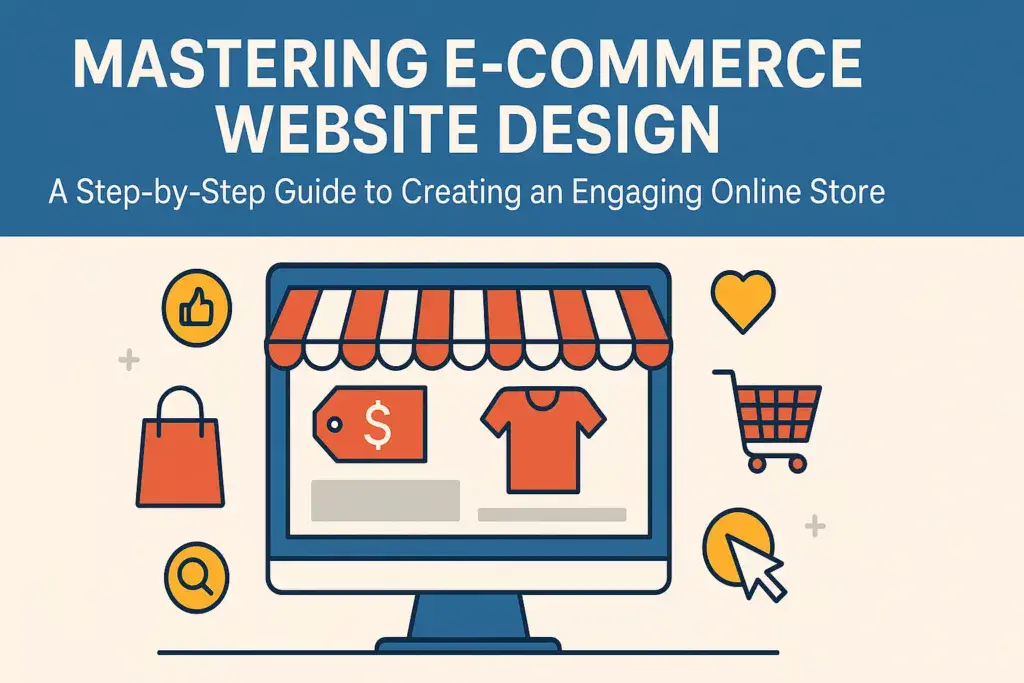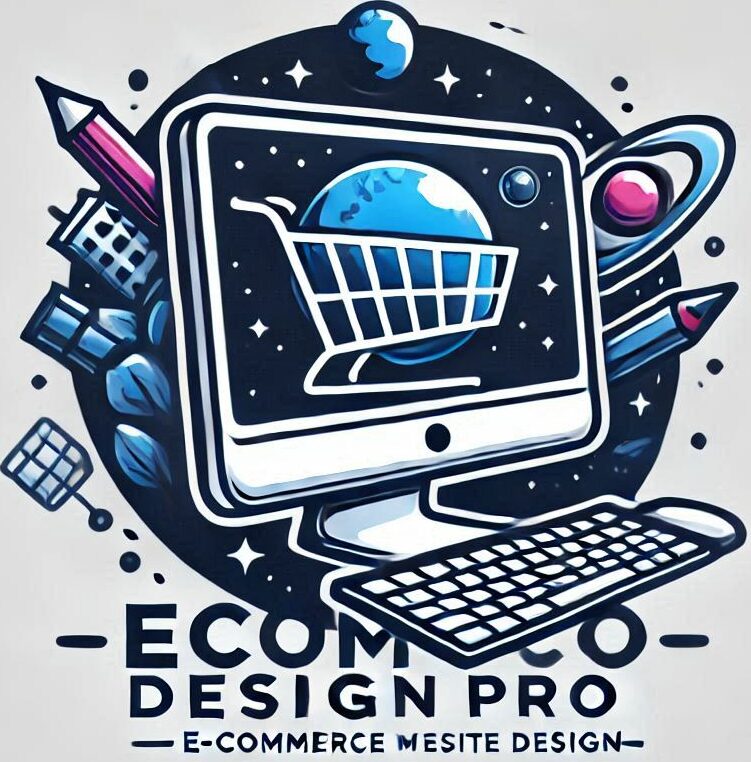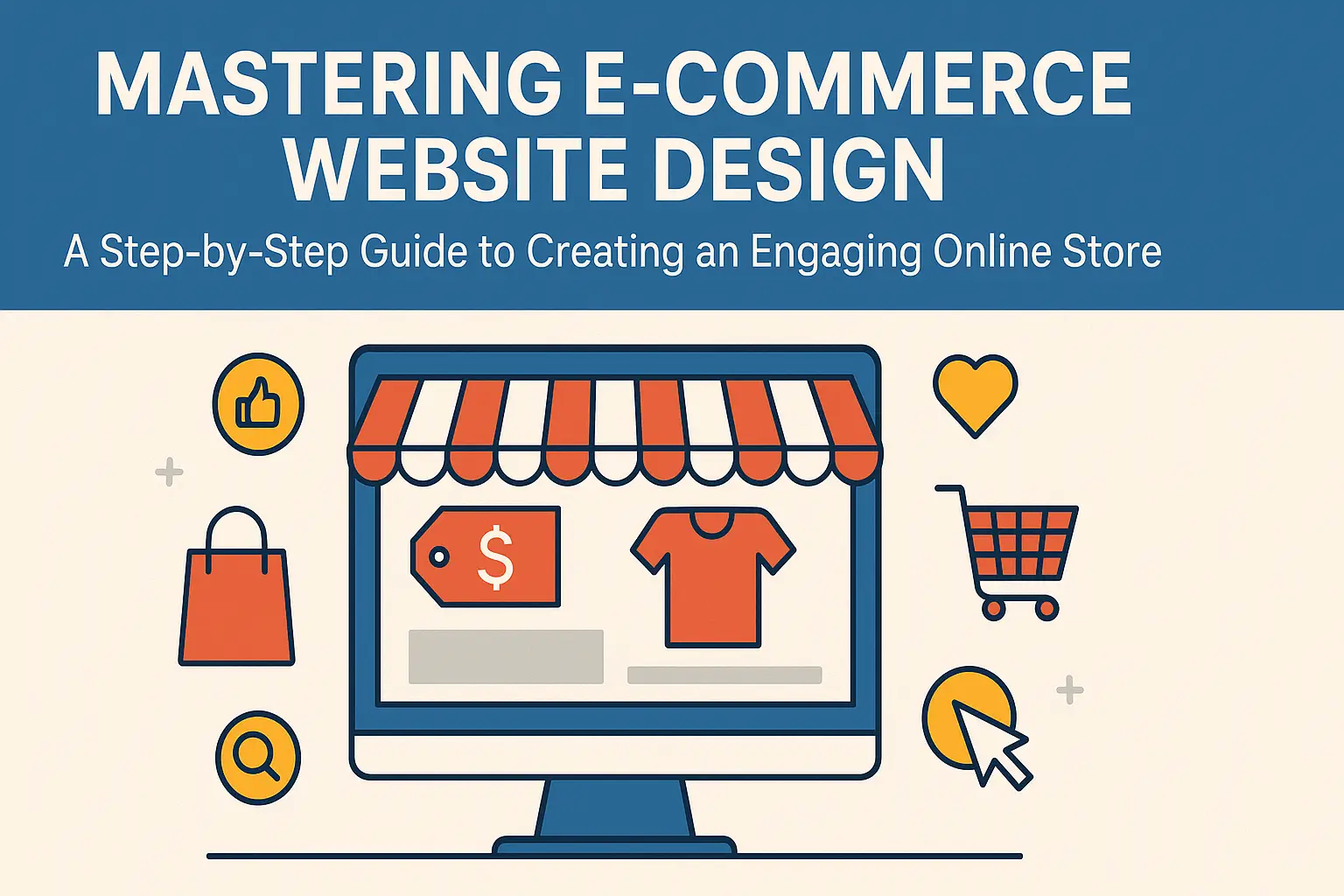
E-Commerce Website Design is the foundation of a modern online store, shaping user trust, engagement, and conversions from the first click.
I. Introduction to E-Commerce Website Design
Successful E-Commerce Website Design aligns brand identity, speed, accessibility, and UX into a single, cohesive shopping experience.
In today’s digital landscape, e-commerce has become an integral part of the retail experience, revolutionizing how consumers shop and how businesses operate. Designing an effective e-commerce website is essential for any business looking to establish a robust online presence, attract customers, and drive sales. A well-designed e-commerce website serves as a virtual storefront, enhancing user experience, building trust, and increasing conversion rates.
The primary goal of e-commerce website design is to create a seamless and engaging shopping experience that encourages visitors to browse and ultimately make a purchase. This process involves a combination of strategic planning, user-centric design principles, and a deep understanding of the target audience’s needs and preferences.
In this guide, we will explore the critical components of ecommerce website design, from understanding the unique requirements of your business to crafting a user-friendly interface that facilitates smooth navigation and transactions. Whether you are starting a new online venture or revamping an existing site, this step-by-step approach will provide the insights and tools necessary to create a successful e-commerce platform that meets both business objectives and customer expectations.
In short, effective E-Commerce Website Design turns casual browsing into confident buying.
II. Understanding E-Commerce Requirements
To create a successful e-commerce website, it is essential to understand the foundational requirements that will drive its design and functionality. This section will guide you through the critical steps necessary to ensure that your e-commerce platform meets the needs of both your business and your customers.
A. Identifying Target Audience
Audience clarity drives E-Commerce Website Design, because personas dictate layout choices, navigation depth, and content hierarchy. Knowing who your customers are will significantly influence your ecommerce website design choices, content, and marketing strategies. Consider demographics such as age, gender, location, income level, and interests. Conducting market research, surveys, and analyzing competitors can help you gather valuable insights into your audience’s preferences and behaviors.
Once you have a clear picture of your target audience, you can tailor your website’s user experience to meet their specific needs, ensuring that it resonates with them on a personal level. This alignment is crucial for increasing engagement and conversion rates.
B. Defining Business Goals
Define goals that E-Commerce Website Design can serve awareness, engagement, or conversion so your layout and features align with outcomes.
With a clear understanding of your target audience, the next step is to define your business goals. What do you hope to achieve with your e-commerce website? Common objectives include increasing brand awareness, driving sales, expanding into new markets, or enhancing customer loyalty.
Having well-defined business goals will help inform the design and functionality of your website. For instance, if your primary goal is to boost sales, you might prioritize features like clear product displays, customer reviews, and streamlined checkout processes. Conversely, if brand awareness is your focus, you may want to invest in visually appealing content and social sharing features that highlight your brand’s story and values.
C. Choosing the Right E-Commerce Model
The final component in understanding e-commerce requirements is selecting the right e-commerce model that aligns with your business goals and target audience. There are several models to consider, including:
- Business-to-Consumer (B2C): This model involves selling products or services directly to individual consumers. It’s the most common e-commerce model and is ideal for businesses targeting the general public.
- Business-to-Business (B2B): In this model, transactions occur between businesses. B2B platforms often require features that facilitate bulk ordering, pricing negotiations, and account management.
- Consumer-to-Consumer (C2C): Platforms that facilitate transactions between consumers, such as marketplaces like eBay or Etsy, fall into this category. If you are considering a C2C model, your website should support user-generated content and secure payment methods.
- Consumer-to-Business (C2B): This model allows consumers to offer products or services to businesses. It’s less common but growing in popularity, particularly in freelance and gig economy spaces.
- Subscription-Based: This model involves recurring payments from customers for continuous access to products or services. It’s essential to design your website to accommodate subscription management and customer retention strategies.
By carefully considering these e-commerce models, you can choose the one that best fits your business strategy and customer needs, setting the stage for effective website design and functionality.
In summary, understanding e-commerce requirements is a vital step in the website design process. Identifying your target audience, defining clear business goals, and choosing the right e-commerce model will provide a solid foundation for creating an effective e-commerce platform that drives success.
Each model (B2C, B2B, C2C, C2B, subscription) informs E-Commerce Website Design patterns, checkout complexity, and user flows.
III. Designing User Experience (UX)
Designing an effective user experience (UX) is a critical aspect of e-commerce website design. A well-thought-out UX not only enhances customer satisfaction but also drives conversions and fosters brand loyalty. In this section, we will explore essential steps to ensure that your e-commerce website provides a seamless and engaging experience for users.
A. Creating User Personas
Personas anchor E-Commerce Website Design by translating research into concrete UI choices, content priorities, and product discovery paths. Creating user personas involves developing fictional representations of your ideal customers based on market research and real data about your existing clientele. These personas should include demographic information, shopping behaviors, preferences, and pain points.
By visualizing your target audience through these personas, you can tailor your website’s design and functionality to meet their specific needs and expectations, ultimately leading to a more personalized shopping experience.
B. Mapping User Journeys
Once you have established user personas, the next step is to map out user journeys. This process involves outlining the various steps a user takes from the moment they land on your website to the point of completing a purchase. Start by identifying key touchpoints, such as product discovery, browsing, and checkout. Consider the emotions, motivations, and challenges users may encounter at each stage.
By visualizing these interactions, you can identify potential friction points and areas for improvement, ensuring that users can navigate your site effortlessly and reach their goals with minimal obstacles.
C. Designing Intuitive Navigation for E-Commerce Website Design
An intuitive navigation system is vital for enhancing the user experience on your e-commerce website. Users should be able to find what they are looking for quickly and easily. To achieve this, employ a simple and logical menu structure that categorizes products in a manner that resonates with your target audience. Use clear labeling for categories and subcategories, and consider incorporating filters and search functionalities to streamline the shopping process.
Additionally, ensure that your website maintains a consistent navigation layout across all pages, providing users with a familiar and predictable experience as they explore your offerings.
By focusing on these key elements of user experience design—creating user personas, mapping user journeys, and designing intuitive navigation—you can develop an e-commerce website that not only attracts visitors but also converts them into loyal customers. In the next section, we will delve into the technical aspects of building your e-commerce platform, ensuring it is equipped with the right tools to support your business objectives.
See the Baymard guidance on list and navigation clarity in E-Commerce Website Design.
→ E-Commerce Website Design UX best practices (Baymard)
IV. Building the E-Commerce Platform
Once you have a clear understanding of your e-commerce requirements and have crafted a user-centric design, it’s time to move into the technical phase: building your e-commerce platform. This step is crucial as it lays the groundwork for a seamless shopping experience and ensures that your website operates efficiently and securely. Below, we break down the essential components of this process.
A. Selecting E-Commerce Software
Your platform selection sets technical limits and opportunities for E-Commerce Website Design—from theme flexibility to performance budgets. There are numerous options available, ranging from hosted solutions like Shopify and BigCommerce to self-hosted platforms like WooCommerce and Magento. When making your choice, consider factors such as scalability, ease of use, customization options, and overall cost.
Inspiration and practical tips for planning E-Commerce Website Design on Shopify.
→ Ecommerce Website Design: Examples and Tips (Shopify).
For businesses just starting out, a hosted solution may be ideal due to its simplicity and lower initial costs. In contrast, larger enterprises may benefit from self-hosted solutions that offer greater flexibility and control. Additionally, take into account the level of technical expertise you possess or can access; some platforms require more technical know-how than others.
B. Integrating Payment Gateways
Once you have chosen your e-commerce software, the next step is to integrate payment gateways. This is a critical component that allows customers to complete their purchases securely. Popular payment gateways include PayPal, Stripe, and Square, among others. When selecting a payment gateway, consider transaction fees, supported payment methods, and the overall user experience during the checkout process.
It is also essential to ensure that your payment gateway is compliant with security standards, such as PCI DSS (Payment Card Industry Data Security Standard). Implementing SSL certificates on your website will further protect sensitive customer information and build trust with your users.
C. Ensuring Mobile Responsiveness
In today’s digital landscape, ensuring that your e-commerce website is mobile responsive is not just an option; it’s a necessity. A significant portion of online shopping is conducted via mobile devices, and a site that is not optimized for mobile use can lead to high bounce rates and lost sales.
To create a mobile-responsive design, start by utilizing responsive web design techniques that allow your site to adapt to various screen sizes. Test your website across a range of devices and browsers to identify any issues in usability. Remember, a seamless mobile experience includes fast loading times, easy navigation, and a streamlined checkout process.
In summary, building your e-commerce platform involves careful selection of software, secure integration of payment gateways, and a strong emphasis on mobile responsiveness. By focusing on these foundational elements, you will create a robust e-commerce site capable of delivering a satisfying shopping experience to your customers, ultimately driving sales and fostering business growth.
Meet Core Web Vitals to keep E-Commerce Website Design fast and stable across devices.
→ Core Web Vitals for E-Commerce Website Design (Google)
V. Conclusion
In conclusion, designing an effective e-commerce website is a multifaceted process that requires careful planning and execution. By understanding the unique requirements of your business and your target audience, you can create an online platform that not only meets the needs of your customers but also supports your business goals.
The design of the user experience is critical; it should be intuitive, engaging, and efficient, enabling users to navigate your site with ease. By focusing on user personas and mapping out user journeys, you can ensure that every interaction on your site is purposeful and enhances the overall shopping experience.
Additionally, building a robust e-commerce platform involves selecting the right software that aligns with your vision and operational needs. Integrating secure payment gateways and ensuring mobile responsiveness will further enhance the functionality and accessibility of your site, catering to a wider audience.
Ultimately, the success of your e-commerce website hinges on a combination of thoughtful design, strategic planning, and continuous optimization. As you move forward, remember to remain adaptable and open to feedback, allowing your website to evolve alongside the ever-changing landscape of e-commerce. With the right approach, your e-commerce site can become a powerful tool for driving sales and fostering customer loyalty.
FAQs(Frequently Asked Questions)
Q1: What is E-Commerce Website Design?
A: E-Commerce Website Design is the end-to-end process of planning, structuring, and styling an online store so shoppers can discover products, trust the brand, and check out smoothly.
Q2: Why is E-Commerce Website Design critical for conversions?
Q3: How does SEO connect to E-Commerce Website Design?
A: E-Commerce Website Design influences Core Web Vitals, information architecture, structured data, and internal links—elements search engines reward for relevance and experience. Google for Developers+1
Q4: What UX essentials belong in modern E-Commerce Website Design?
A: Clear navigation, robust search and filters, scannable product lists, persuasive product pages, and a streamlined checkout are core to E-Commerce Website Design. Baymard InstituteNielsen Norman Group+1
Q5: Which platform is best for E-Commerce Website Design?
A: It depends on scale and flexibility. Shopify, WooCommerce, BigCommerce, and Magento all support solid E-Commerce Website Design—choose based on features, performance, and growth plans. Shopify
Q6: How do Core Web Vitals affect E-Commerce Website Design?
A: LCP, INP, and CLS set performance targets that E-Commerce Website Design should meet to keep pages fast, stable, and responsive—benefiting rankings and revenue. Google for Developers+1
Q7: What’s the most overlooked part of E-Commerce Website Design?
A: Product-list density and readability (fonts, spacing, bullets) often get ignored—even though they strongly impact scannability and product comparison. Baymard Institute
Q8: How often should I update my E-Commerce Website Design?
A: Review UX and performance quarterly; ship small, iterative improvements based on analytics, user tests, and changing inventory.



